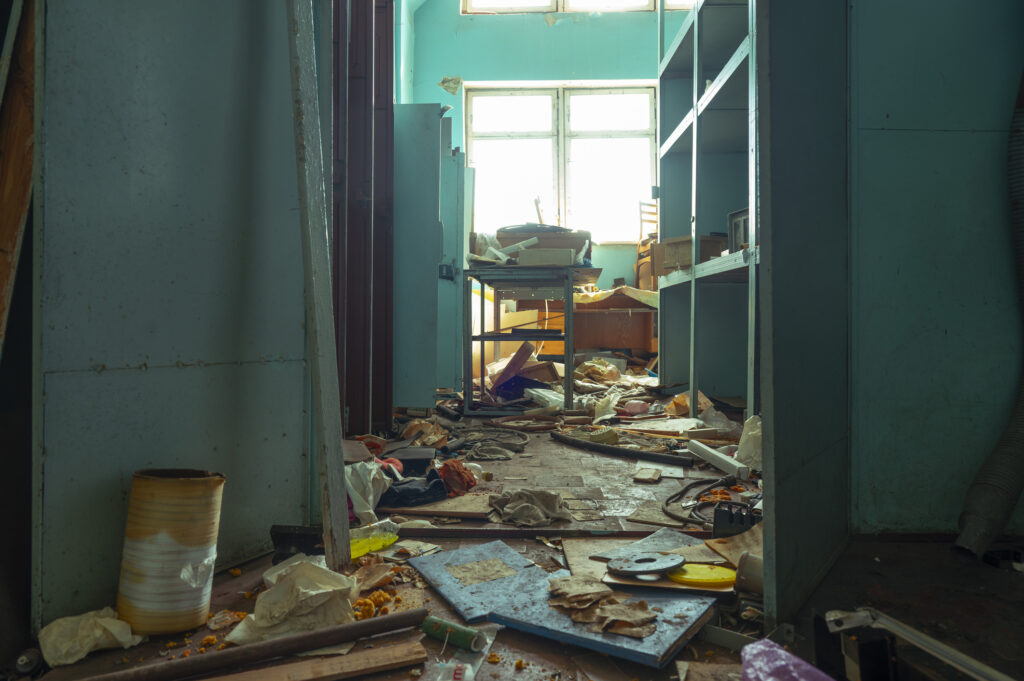
By Loretta L. Worters, Vice President, Media Relations, Triple-I
Vacant properties typically carry extra threat than meets the attention. From burst pipes and property theft to legal responsibility and squatter intrusion, a house left unoccupied for an prolonged interval is uncovered to a novel set of hazards, lots of which might not be coated by an ordinary owners’ insurance coverage coverage.
Take into account a latest case involving a home-owner who inherited a household property positioned a number of states away. With plans to promote the house, they left it unoccupied whereas it sat available on the market by the winter months. After greater than 60 days with out a go to, the house owner returned to discover a devastating scene: a pipe had burst throughout a tough freeze, flooding a lot of the home.
With out anybody house to detect the problem, water had leaked for days — probably weeks —inflicting extreme harm to ceilings, partitions, flooring, heating and electrical methods. The estimated price of repairs exceeded $60,000.
Sadly, their commonplace owners insurance coverage coverage excluded protection as a consequence of a emptiness clause, which had been triggered by the house’s unoccupied standing.
Understanding Emptiness Clauses
Most owners insurance coverage insurance policies embody a emptiness clause, which limits or excludes protection if the property is unoccupied for sometimes 30 to 60 consecutive days. It is because vacant properties current heightened dangers, together with:
- Undetected water leaks or burst pipes;
- Elevated chance of theft, vandalism, or trespassing;
- Larger publicity to fireplace harm or electrical deficiencies; and
- Legal responsibility if somebody is injured on the property.
If a house can be vacant for an prolonged interval, whether or not as a consequence of a sale, relocation, inheritance, or renovation, it’s important to tell your insurance coverage provider and assessment your protection choices.
Water harm is without doubt one of the commonest and costly points in unoccupied properties. Repairing harm from a burst pipe can price $10,000 to $70,000 or extra, relying on how lengthy the problem goes unnoticed. In vacant properties, the place common checks are rare, leaks can proceed for prolonged durations earlier than detection, considerably growing restore and remediation prices.
Vacant properties are also extra inclined to theft and unauthorized occupancy. Copper piping, home equipment, and even fixtures could be engaging to criminals. Squatters current one other problem: in some jurisdictions, they’ll acquire tenant rights if not eliminated promptly, resulting in authorized prices and delays.
Many commonplace insurance policies exclude or restrict protection for theft and vandalism as soon as a house is deemed vacant. This makes correct protection much more necessary for owners who go away properties unoccupied, even briefly.
Householders could also be stunned to study that legal responsibility publicity continues even when nobody lives there. Accidents on vacant property can result in vital monetary losses.
Frequent examples embody:
- A supply individual slips on an icy walkway and seeks damages;
- A contractor or realtor journeys and is injured throughout a property displaying; or
- A toddler enters the house and is harm whereas exploring.
In such instances, the house owner could also be held liable, and, if the house is assessed as vacant beneath the coverage, legal responsibility protection might be denied. Authorized bills and settlements can simply run into six figures.
Emptiness endorsements can be found
To handle the elevated dangers of a vacant property, insurers provide vacant house insurance coverage insurance policies or emptiness endorsements. These insurance policies are designed to cowl unoccupied properties and sometimes embody:
- Water harm from plumbing or heating failures;
- Fireplace, lightning, windstorm, and hail harm;
- Theft, vandalism, and harm attributable to trespassers; and
- Protection for authorized legal responsibility within the occasion of harm on the property.
Whereas these insurance policies are usually costlier than commonplace owners insurance coverage, they supply important safety.
Vacant house insurance policies typically nonetheless embody safety for “sudden and unintentional” occasions, resembling a pipe bursting as a consequence of freezing temperatures. Nevertheless, insurers sometimes require proof that cheap steps have been taken to keep up the property. Failing to warmth the house throughout the winter, for instance, might void protection even beneath a vacant house coverage.
Whether or not a house is vacant for weeks or months, the next steps will help cut back your publicity:
- Keep indoor warmth: Preserve the thermostat at the least 55°F throughout winter months.
- Shut off the water provide: Or totally winterize the plumbing system.
- Safe all entry factors: Lock doorways and home windows; think about strengthened locks.
- Set up distant monitoring methods: Leak detectors, thermostats, and cameras can present early warnings.
- Schedule common visits: Have a neighbor, member of the family, or property supervisor verify the house weekly.
- Keep walkways and lighting: Scale back the chance of slip-and-fall accidents with correct maintenance.
- Talk with insurer: All the time notify an insurer if the house can be unoccupied for an prolonged interval.
Leaving a house unoccupied for months with out adjusting your insurance coverage protection can expose you to vital monetary threat. From pricey repairs and authorized legal responsibility to denied claims, the implications could be catastrophic.
Earlier than leaving a property vacant, whether or not as a consequence of sale, inheritance, or short-term relocation, owners ought to seek the advice of their insurance coverage agent to establish the suitable protection. Acquiring a vacant house insurance coverage coverage or endorsement can shield each the property and the house owner’s monetary safety.
Study Extra:
How Your Roof Influences Your House and Enterprise Insurance coverage (Triple-I Roofing Toolkit)

